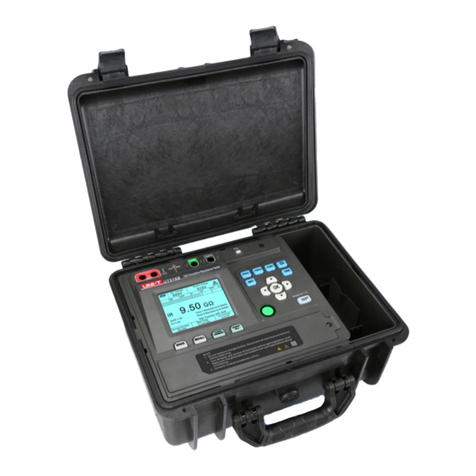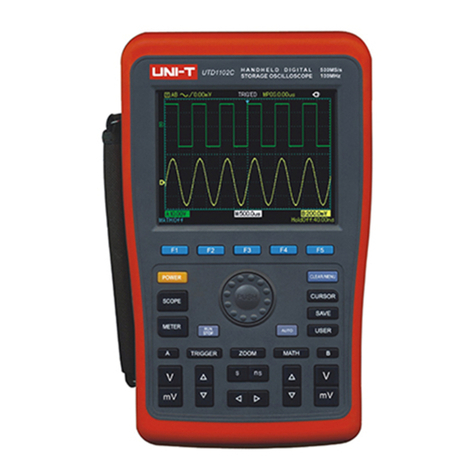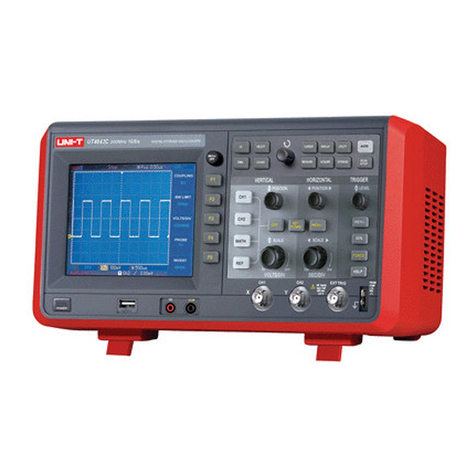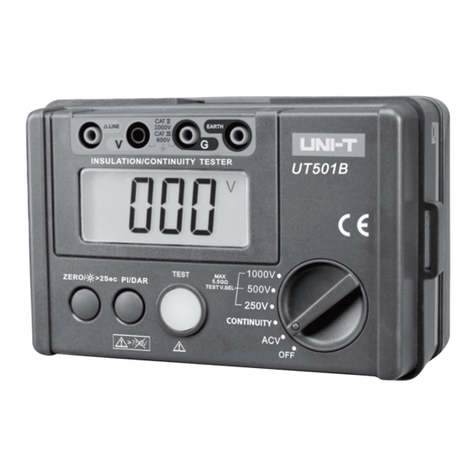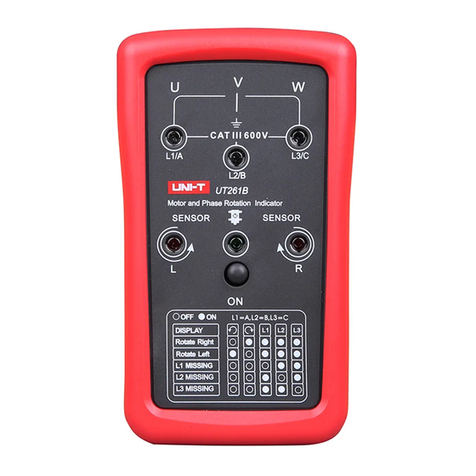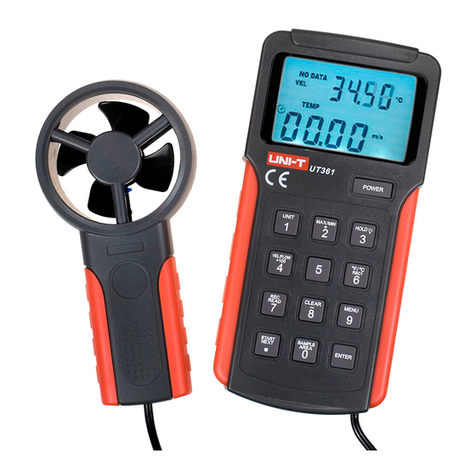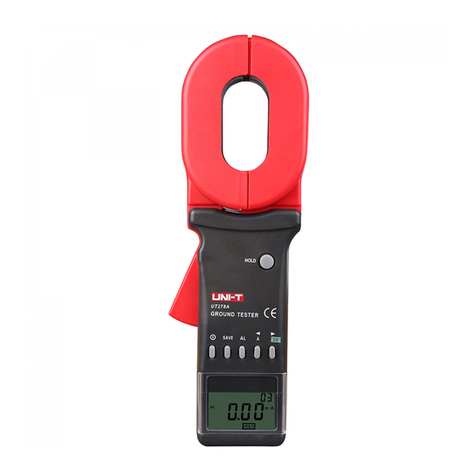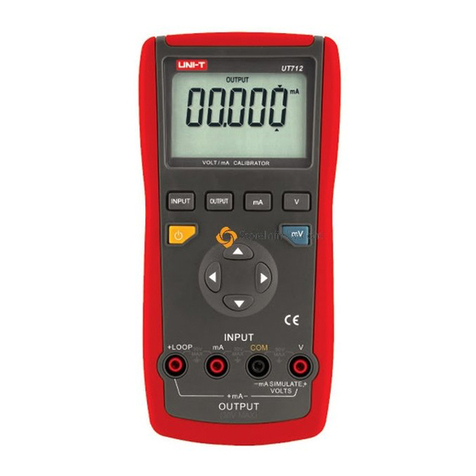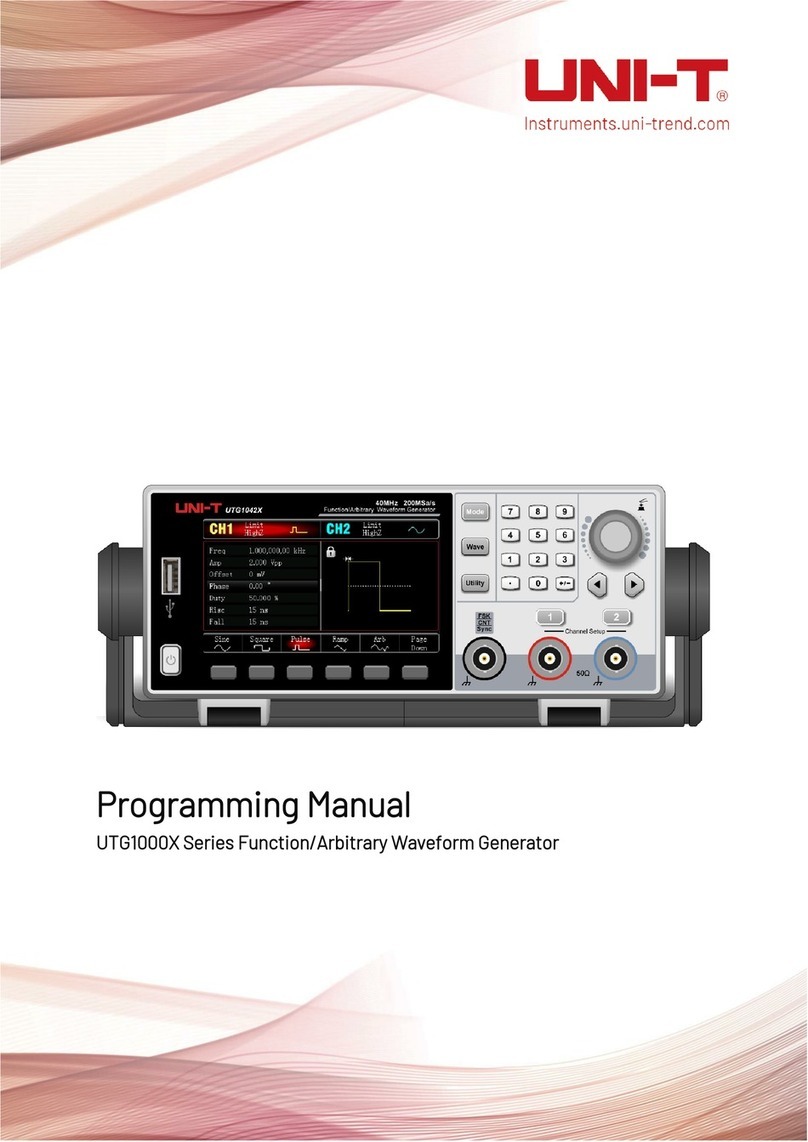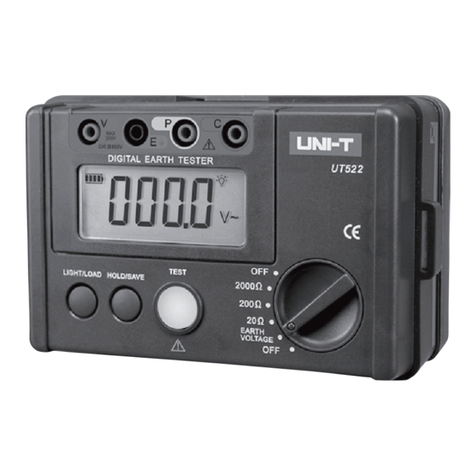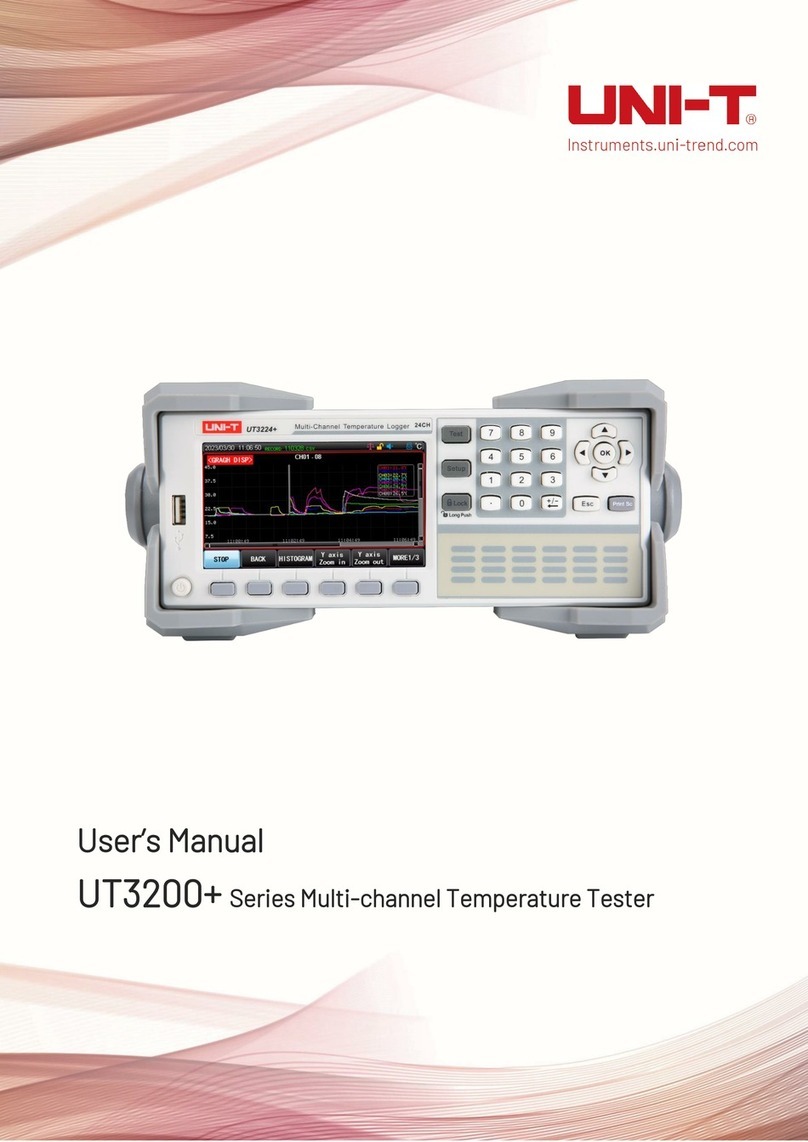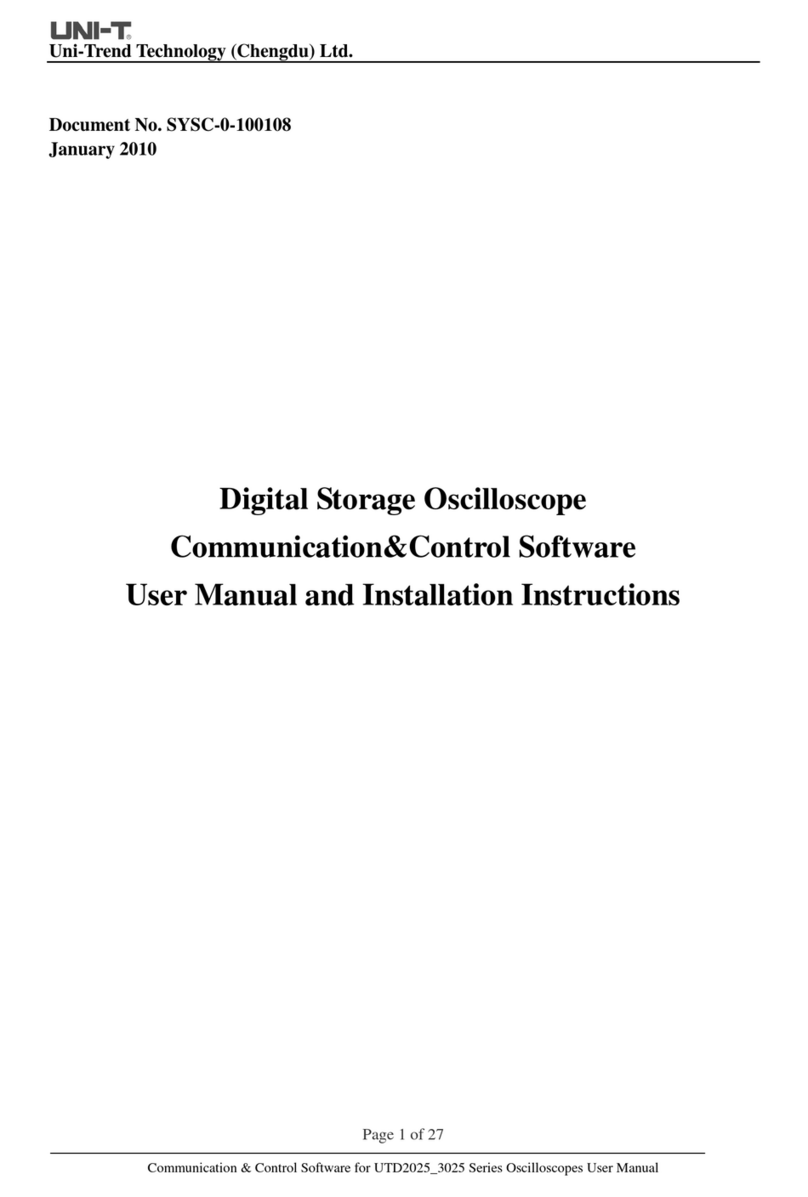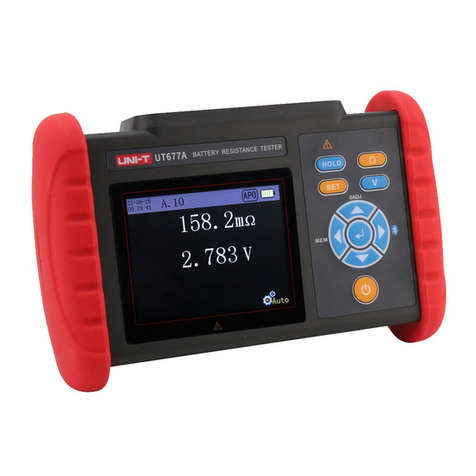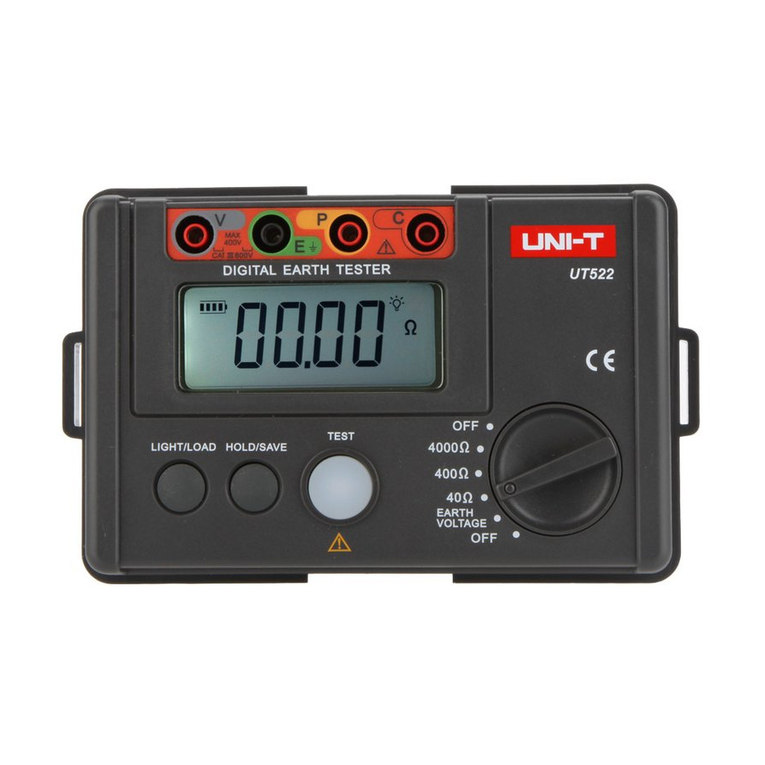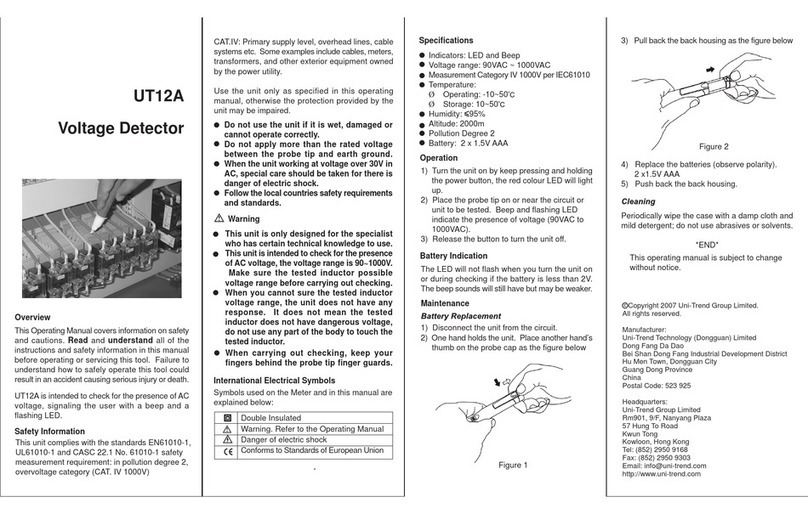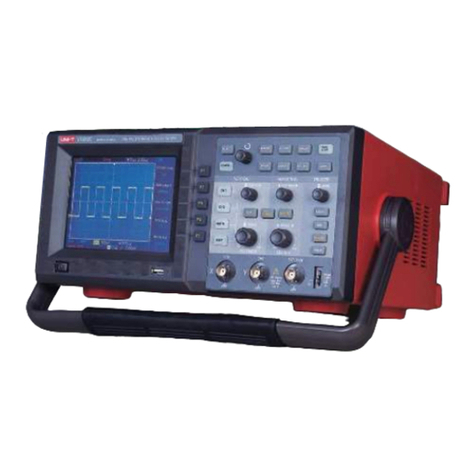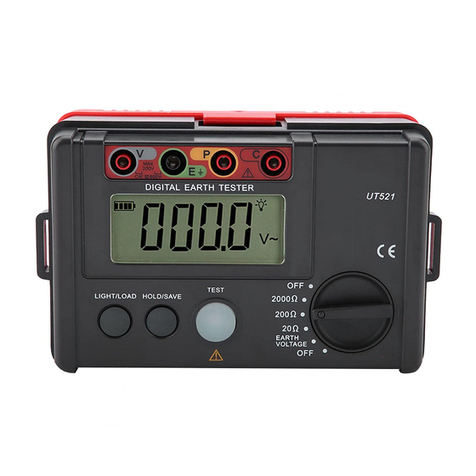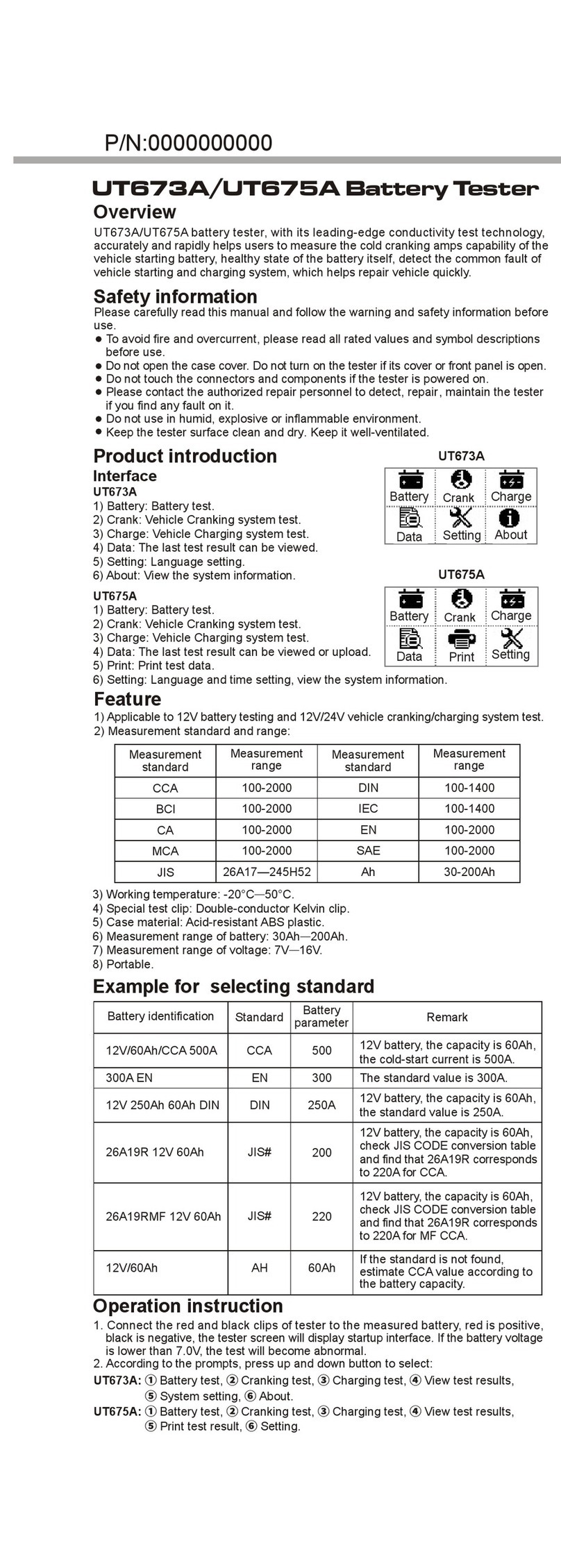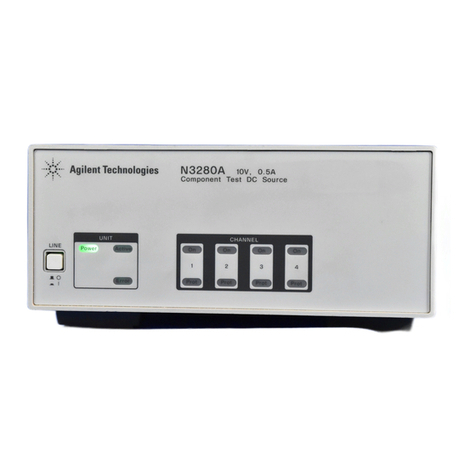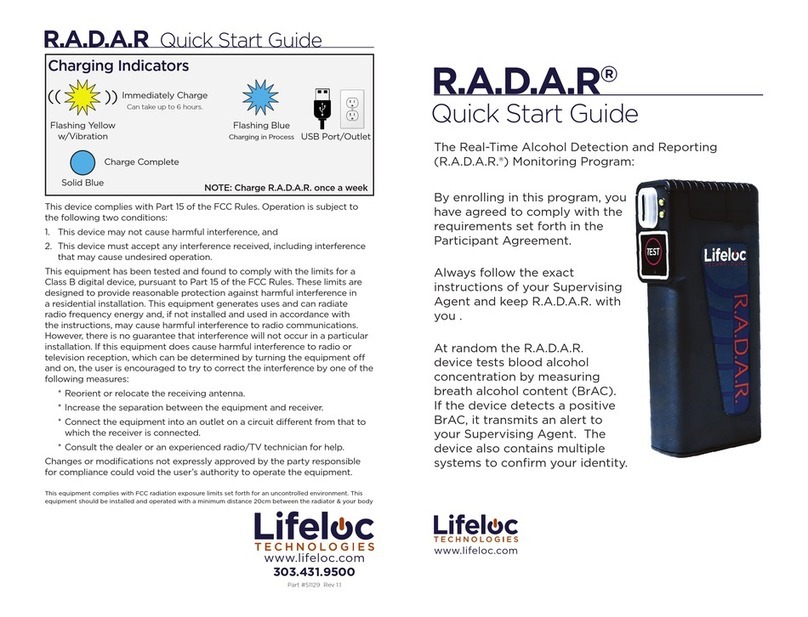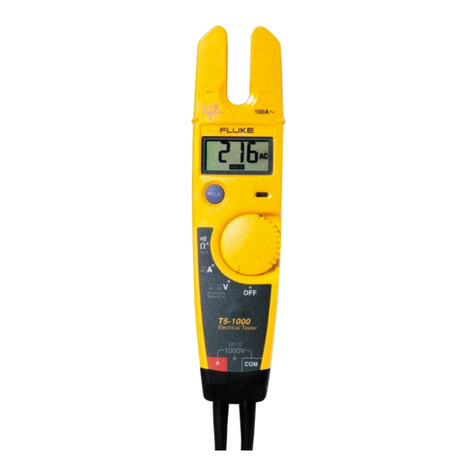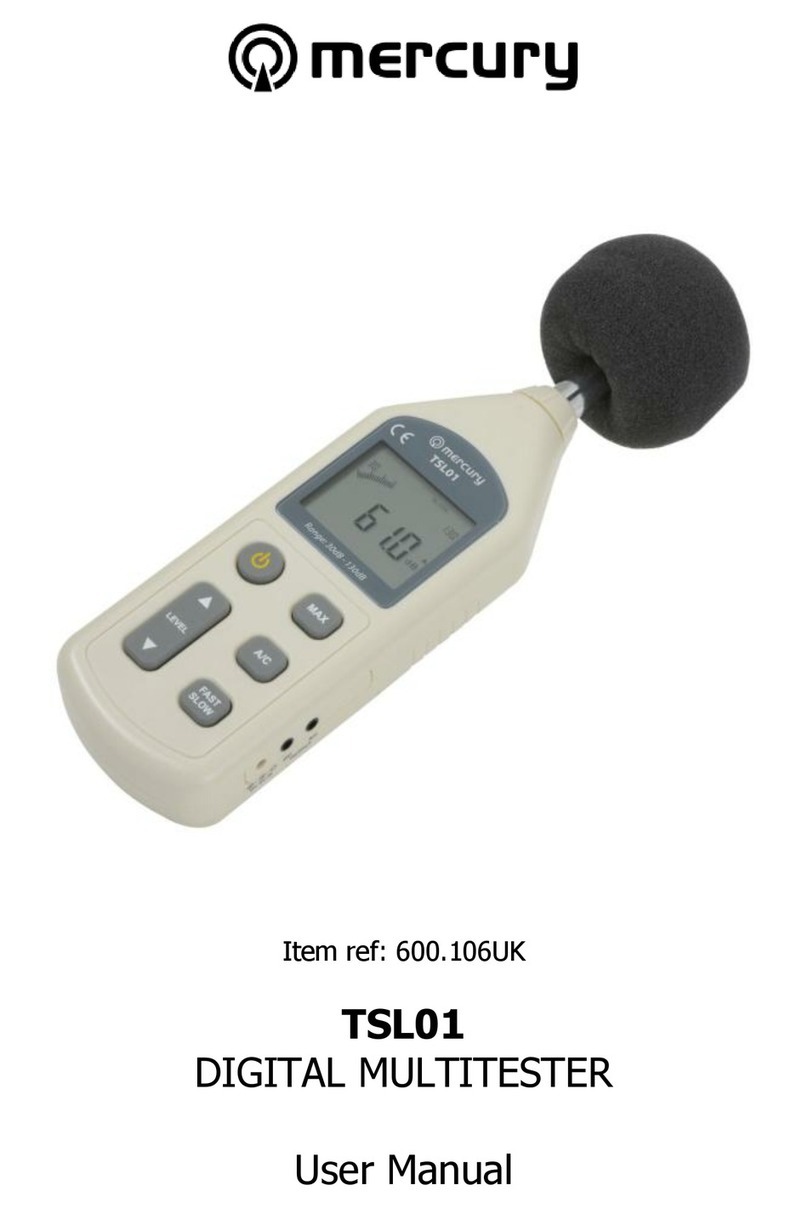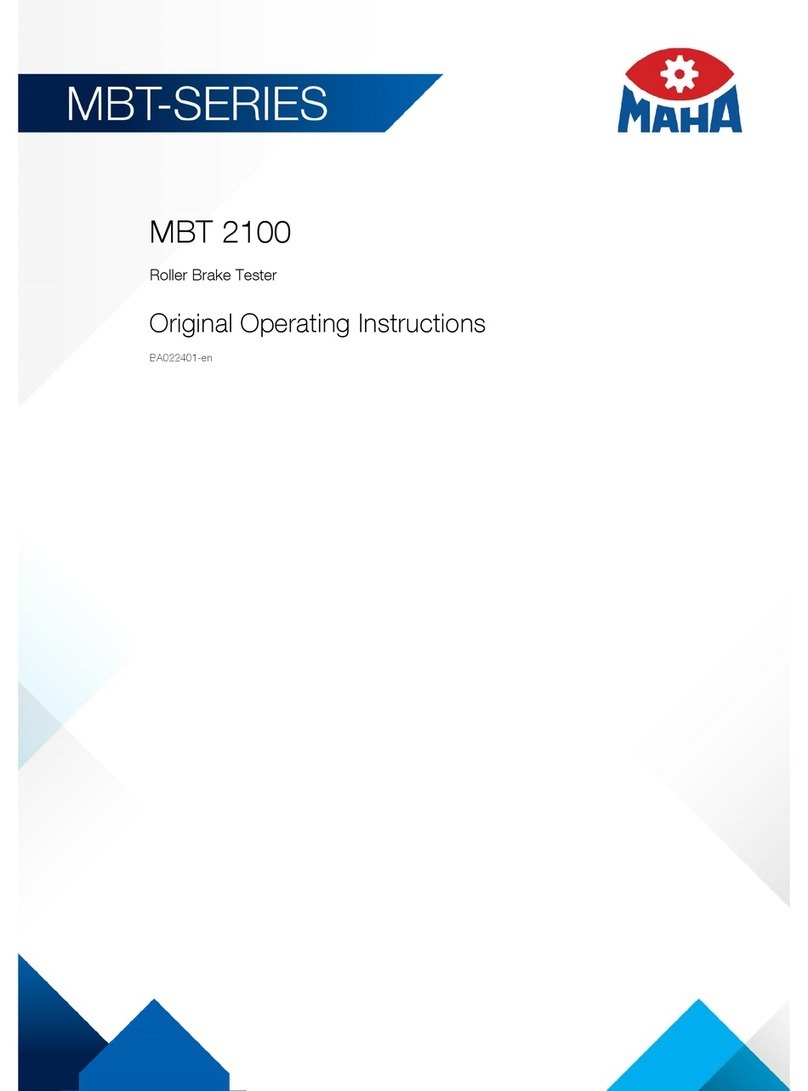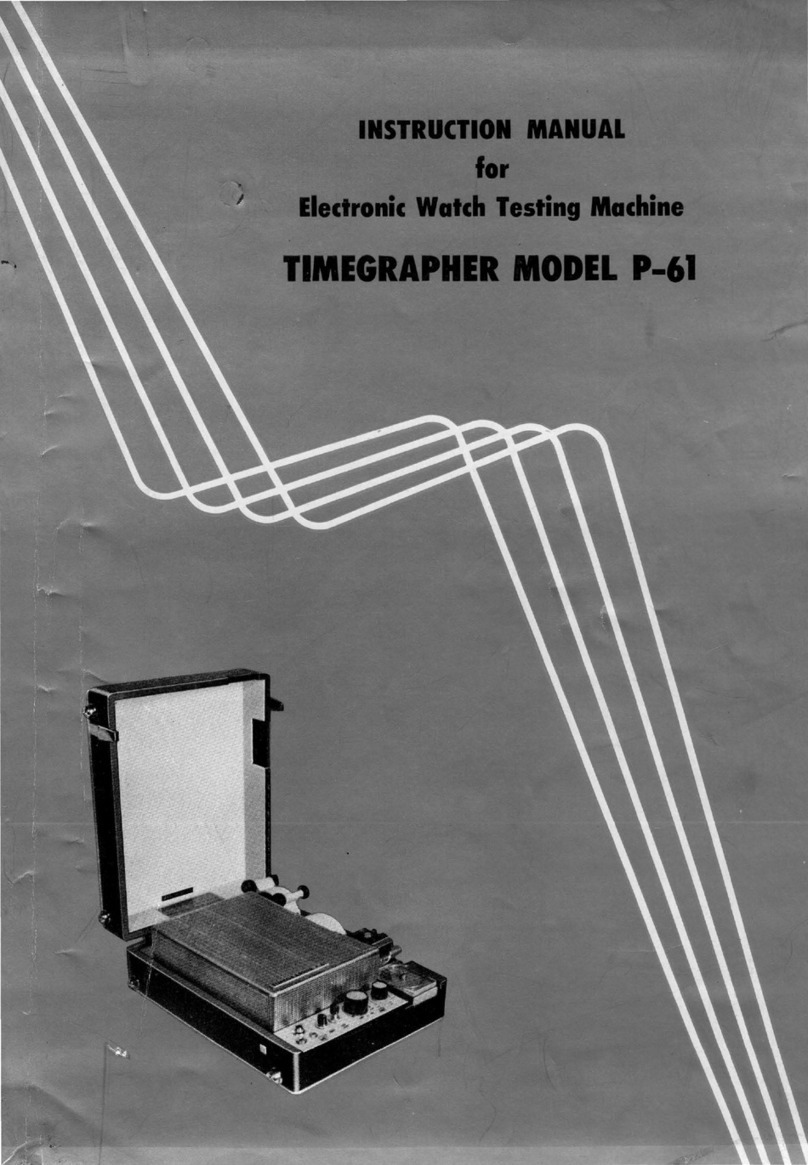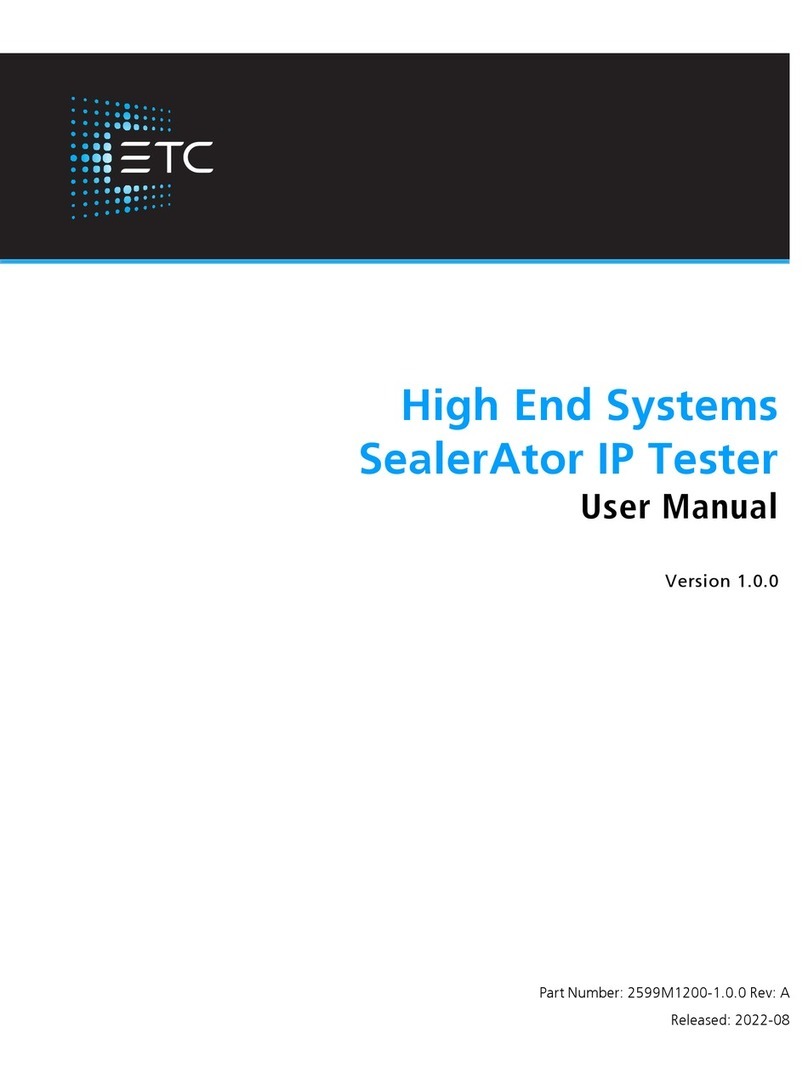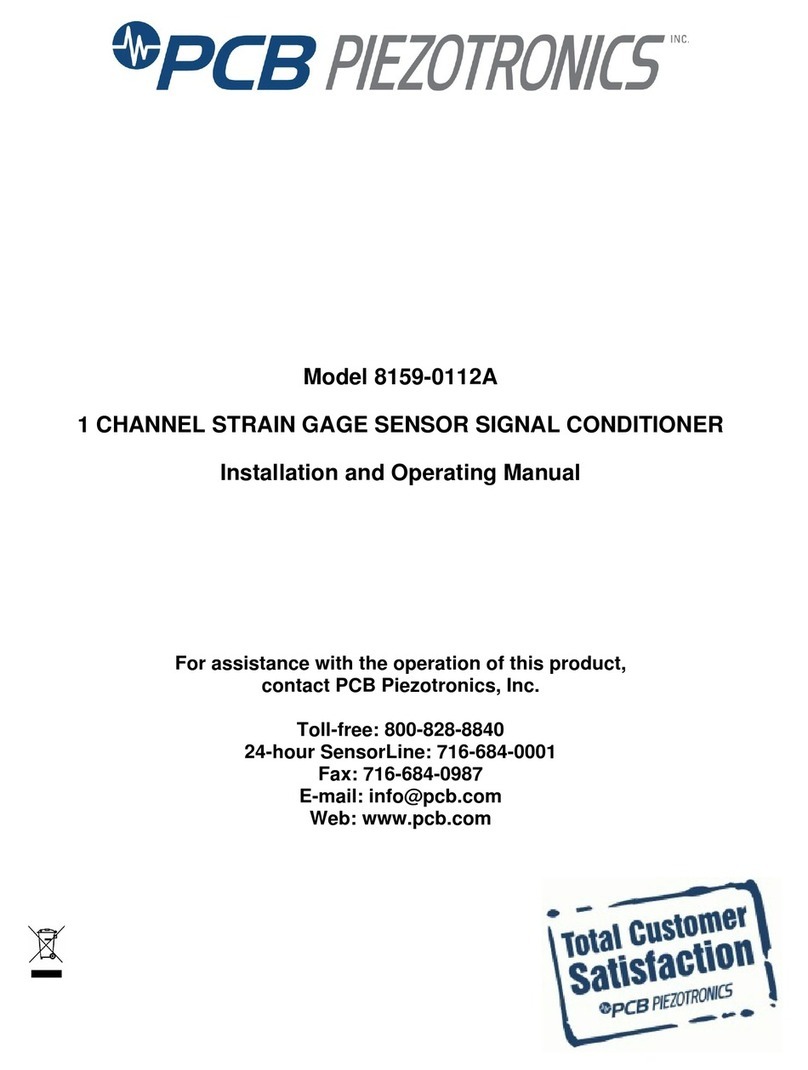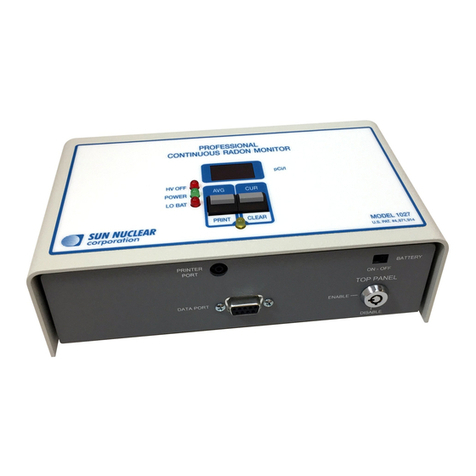Copyright Information
UNI-T
: Uni-Trend Technology (China)Co., Limited. All copyrights reserved.
UNI-T
products, including obtained issued or pending patents, are protected by national or foreign patent
rights. Specifications and price change privileges reserved.
UNI-T
shall reserve all rights. Licensed software products are owned by UNI-T, its subsidiaries or providers
and protected by national copyright laws and international treaty provisions. Information in this publication
supersedes previously published materials.
UNI-T
is a registered trademark of Uni-Trend Technology (China)., Limited
Warranty period is 3 years since original purchaser purchases the product from UNI-T or authorized
distributor if product is sold or transferred to the third party within 3 years after original purchaser
purchases it. Probe, other fittings and fuses are excluded in this warranty.
UNI-T, at its option, either will repair products with defects independently without charge of parts and
labor or replace them by equivalent products if there is any defect during applicable warranty period.
Warranty parts, modules and replaced products of UNI-T may be new or with performance of new products
after maintenance. All replaced parts, modules and products become UNI-T properties.
“Users” mentioned below refer to rights persons or entities regulated under the rights of the warranty.
“Users” must report defects to UNI-T within appropriate warranty period and make proper arrangement in
order to get access to the service commiteed by the warranty. Users shall pack products with defects and
submit them to service center designated by UNI-T. In the meanwhile, they shall pay for freight fee in
advance and provide a copy of customer proof of original purchase. UNI-T shall pay for product return
expense to users if transporting product to location within state of UNI-T service center. Users shall pay for
all freight fees, tariffs, taxes and other expenses if returning products to any other locations.
The warranty is not applicable to any defect, trouble or damage caused by sudden accidents, normal
abrasion of machine parts, improper usage, maintenance or deficiency out of scope of product regulations.
UNI-T shall not be liable for providing the following services according to warranty regulations:
a) To maintain products which are damaged due to product installation, repair or maintenance by not UNI-T
service representatives.
b) To maintain damage caused by improper usage or connection of incompatible equipment;
c) To maintain damage or trouble caused by using power not provided by UNI-T;
d) To maintain products which have been altered or integrated with other products (if such alternation or
integration will increase product maintenance period or difficulty);
The warranty is signed by UNI-T with respect to the product in lieu of any other expressed or implied
warranties. UNI-T and its distributor refuse any implied warranty for marketability or suitability with special
purpose. UNI-T shall maintain or replace products with defect to users as the sole and exclusive for
warranty violation. UNI-T and distributors shall not be responsible for any indirect, special, incidental or
inevitable damage regardless of whether UNI-T and its distributors has advanced notice of the possibility of
such damages.
2 UTD1000L User Manual
